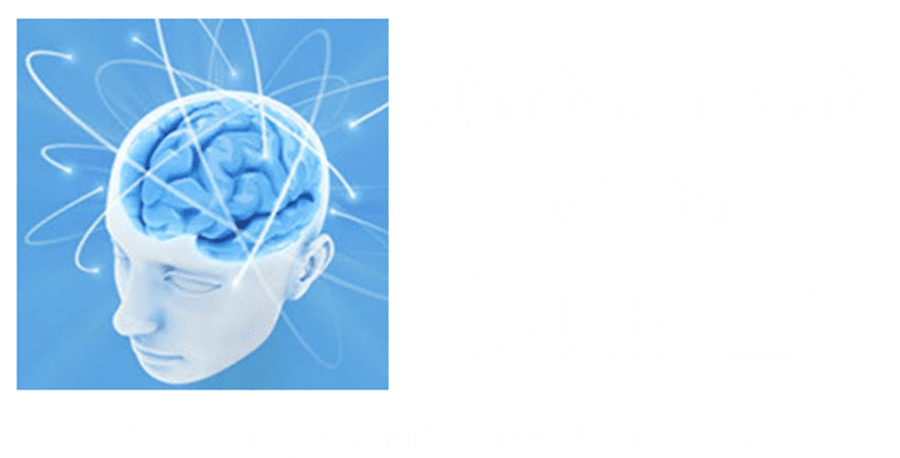
Counseling Techniques at Carter Counseling
Our preferred coaching and counseling techniques are a blend of approaches suited to identifying and working directly with specific neural networks. These include online therapy courses, hypnosis downloads, videos, audios, psychological defense mechanisms, and many other therapy tools such as those listed below. To see the tools listed here in action you may want to check out our Serenity Cafe Academy. This is where some of our visitors are actually using variations of the tools described below in multimedia formats that can be completed online or downloaded to a computer or mobile device to help them heal the issues discussed on this website and in our online therapy courses based on the Thawing the Iceberg Series Course Bundle.

A Toolbox of Counseling Techniques
Since we all have our own unique ways of seeing the world, ourselves, and other people it’s best for a therapist to have a toolbox of skills and interventions. Equipped with appropriate tools, the therapist and client can devise a plan best suited to the person and their issues, without trying to control or coerce the subconscious mind. I have a friend who likes to say …”If all you have is a hammer, then everything begins to look like a nail.”
Below are summaries of the primary approaches I draw from in creating individualized treatment plans. They are all suited to the creation of efficient and effective changes in the neural networks of the Internet of the Mind – My map of the world. I do not intend to go into the theory of each approach but simply to outline a summary of them.
Eye-Movement Desensitization Reprocessing (EMDR)
Eye-Movement Desensitization Reprocessing, commonly known as EMDR, is a psychotherapy used to treat emotional and mental health conditions that happen because of memories from traumatic events in your past. It’s best known for its role in treating post-traumatic stress disorder (PTSD), but its use is expanding to include treatment of many other conditions. As an Integrative Psychotherapist and Certified Complex Trauma Professional at Levels 1 & 2, Don has been using EMDR for several years. When it is successful, the results are rapid, profound, and lasting. I believe this is because it relies on bilateral stimulation (BLS) of the right and left hemispheres of the brain in alterating fashion (right-left Eye movements, right-left body tapping, right-left auditory stimulation, etc.). This therapy is both Mind AND Body focused, BLS helps keep them both involved in the healing process!
When EMDR is not successful, it is because the person is not ready or prepared for the therapy. This is why I like to integrate various forms of compementary therapy approaches. IFS and Ego-State therapies help prepare the client when there is a defense mechanism or some other form of internal resistence to change. In IFS we refer to this as an objecting part of self, or concerned part of self. In ego-state therapy we think of it as an ego-state which is just another word for part-of-self. Gestalt Therapy is also exteremely usesful.
Another reason a client might need more time and therapy to prepare has to do with their Window or Tolerance. They need safety internally and externally in order to open that “window”. This is where guided imagery and hypnotherapy is just what the doctor ordered. With these approaches we can construct an internal safe place, I call this a “safe container”. The therapeutic relationship and the person’s support network provides the external safe container. EMDR cannot proceed when ther is no safe container.
Cognitive-Behavioral Therapy
Cognitive Behavioral Therapy (CBT) is a counseling technique deals with limiting beliefs. Albert Ellis and Aaron Beck are widely known as the pioneers of CBT. They have their own variations in the theory and practice of CBT. Again it is not my intent to go into the theory of CBT but to simply introduce you to the basics and provide some insight into how it may apply to change our neural pathways. Click on the link above to find out more about CBT.
Gestalt Psychology
Gestalt Psychology presupposes that people are born with the resources and ability to enjoy rewarding contact with others and lead a satisfying and creative life. However, often during childhood…and sometimes later…something interrupts normal developmental processes and the person gets stuck in fixed patterns and beliefs about themselves that get in the way. Gestalt aims to investigate and uncover how these patterns (neural networks) are still active and holding the person back or stopping them from getting what they want from life. The “Father of Gestalt Therapy” was Frederick “Fritz” Perls.
Family Systems Theory
Family Systems Theory has generated many counseling techniques for understanding and healing children of less-than-nurturing families – whether they be adult-children or children currently living in such families. The lessons learned in the incredible amount of data gathered through research done on families of alcoholism has created a wealth of interventions and knowledge. Because of this whole families are now recovering to stop the cycles of shame and abandonment from being passed on to the next generation.
The family is the original group from which people learn patterns of behavior (neural networks) which they re-enact in other groups later in life. Individuals are programmed with family rules, roles, behaviors, and beliefs that form their original neural networks. Pioneered by “The Mother of Family Therapy” – Virginia Satir – Family systems therapy focuses on becoming conscious of subconscious dysfunctional patterns and learning new ones to improve a person’s life and relationships.
Internal Family Systems Therapy (IFS)
Family Systems Therapies focus on our INTER-personal relationships, especially our family and our family of origin because that is where our “programmers” can be found. They either teach us how-to, or how-not-to do things such as interact with others, our mental filters, etc. On the other hand, Internal Family Systems Therapy (IFS) focuses on our INTRA-personal relationships, what I like to call the inner family of self. We all have many different parts of self and we even express that when we talk to each other saying things like, “One part of me tries hard to stay on my diet, but another part of me is eating everything in the pantry.” Learn more at Serenity Cafe.
Hypnotherapy
There is no shortage of arguments about the nature of hypnosis, especially as a counseling technique. These debates range from the position that “there is no such thing as hypnosis” to “it’s all hypnosis”. From my own studies and experiences, I take these positions; that no one can be “hypnotized” unless they allow it and, indeed, actively participate in the process and that pretty much everything we learn is through a hypnotic process.
As a counseling technique, hypnotherapy involves “getting beyond the radar” of one’s conscious mind and into the subconscious mind (SCM). Hypnosis is used as a tool in therapy and is not usually experienced as one might imagine. For example, a person is usually fully aware of the process even though the subconscious mind is in the forefront. Once there, no changes can be made that does not sound acceptable to the SCM.
If a suggestion is given, either directly or indirectly – through the use of metaphor – which does not fit the value system of the participant it will simply not be accepted. My particular method of Hypnotherapy is Ericksonian which was the style created by the master hypnotherapist Milton Erickson. He was widely considered to be one of the best therapists of all time.
Neuro-Linguistic Programming (NLP)
Neuro-Linguistic Programming is literally a storehouse of extremely effective counseling techniques. NLP was created in the early seventies by John Grinder, a linguist, and Richard Bandler, a computer programmer. Bandler and Grinder believed that if one person could do something then anyone could learn to do it through the use of “modeling”. Modeling is breaking a behavior down to its smallest elements, learning them, and then recreating the pattern by systematically and congruently emulating those elements. In essence, the modeler “becomes” the person being modeled.
Bandler and Grinder developed a whole host of counseling techniques through the modeling of Perls, Satir, and Erickson. They spent time with each other these masters, broke down their patterns and recreated many of their results. Their skills in linguistics and computer programming aided them greatly in this process. NLP is growing and has come a long way, but has yet to achieve the full-fledged status as a stand-alone field of practice. Bandler once said that the growth and development of NLP has “…left a multitude of interventions is its wake”.
Transactional Analysis (TA)
Transactional Analysis (TA) is a counseling technique that deals with ego-states and the role these ego-states play in how we interact with each other and the world in general. Ego-states are the equivalent of what we refer to as neural networks. In TA theory, each person has three ego-states (or neural networks), which are separate and distinct sources of behavior: the Parent ego-state, the Adult ego-state, and the Child ego-state.
A person can “activate” only one ego-state at a time which means they act according to the beliefs, feelings, and behaviors of that ego-state. Any person who has experienced “losing it” in an argument with their spouse can attest to what it feels like to be in the “angry child” state if they feel childish after the fight is over.
Inner Child Therapy
Inner Child Therapy evolved from Transactional Analysis, NLP, and Family Systems Therapy. In TA the Inner Child was referred to as the Adapted Child, the Natural Child, and the Little Professor. All of these terms are metaphors for what has come to be known as various fragmented parts of our self. The terms “fragmented parts” and “self” are also metaphors or counseling techniques we use to talk about something inside of us that we cannot see – i.e., our neural networks.
Ego-State Therapy
Ego-State Therapy evolved from psychoanalytic theory and the practice of hypnotherapy. Ego-State Therapy is a counseling technique that was pioneered by husband and wife duo, John and Helen Watkins, in the seventies and eighties. It’s an ideal form of hypnotherapy that allows work to be done directly with neural networks while in a hypnotic state. Lasting changes often take place on a deep level.
Parts Integration Therapy
Parts Integration Work, also known as Parts Work, is a counseling technique that came out of the NLP interventions that were created through modeling of Fritz Perls and Virginia Satir. Closely related to Ego-State Therapy, the term “Parts” is a metaphor for various neural networks that are also referred to as fragmented parts of the core self. Virginia Satir used the concept of parts to work on roles in the family and held an occasional “Parts Party” in family therapy sessions. More recently, Internal Family Systems Therapy (IFS) has caught on with the new evidence for neuroplasticity. IFS was created by Richard Schwartz.





